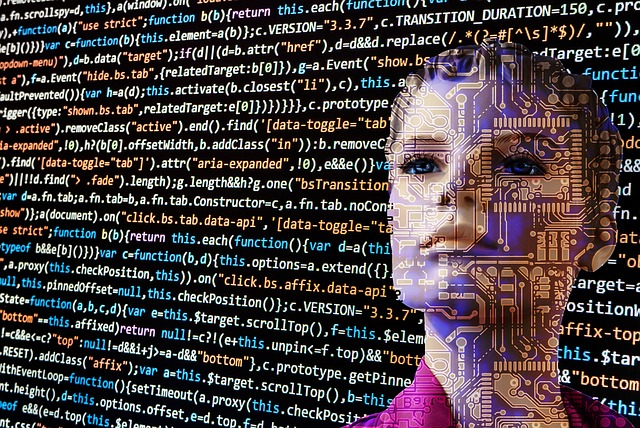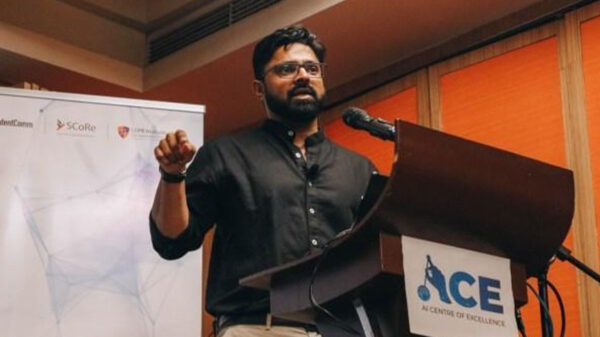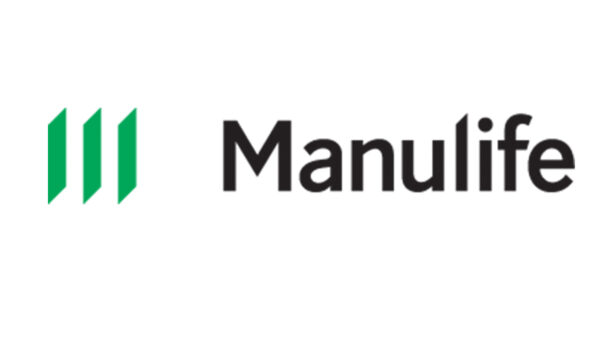Gartner, Inc. has highlighted the top strategic technology trends that organizations need to explore in 2019.
Gartner defines a strategic technology trend as one with substantial disruptive potential that is beginning to break out of an emerging state into broader impact and use, or which are rapidly growing trends with a high degree of volatility reaching tipping points over the next five years.
“The Intelligent Digital Mesh has been a consistent theme for the past two years and continues as a major driver through 2019. Trends under each of these three themes are a key ingredient in driving a continuous innovation process as part of a ContinuousNEXT strategy,” said David Cearley, vice president and Gartner Fellow.
“For example, artificial intelligence (AI) in the form of automated things and augmented intelligence is being used together with IoT, edge computing and digital twins to deliver highly integrated smart spaces. This combinatorial effect of multiple trends coalescing to produce new opportunities and drive new disruption is a hallmark of the Gartner top 10 strategic technology trends for 2019.”
The top 10 strategic technology trends for 2019 are:
Autonomous Things
Autonomous things, such as robots, drones and autonomous vehicles, use AI to automate functions previously performed by humans. Their automation goes beyond the automation provided by rigid programing models and they exploit AI to deliver advanced behaviours that interact more naturally with their surroundings and with people.
“As autonomous things proliferate, we expect a shift from stand-alone intelligent things to a swarm of collaborative intelligent things, with multiple devices working together, either independently of people or with human input,” said Mr. Cearley. “For example, if a drone examined a large field and found that it was ready for harvesting, it could dispatch an “autonomous harvester.” Or in the delivery market, the most effective solution may be to use an autonomous vehicle to move packages to the target area. Robots and drones on board the vehicle could then ensure final delivery of the package.”
Augmented Analytics
Augmented analytics focuses on a specific area of augmented intelligence, using machine learning (ML) to transform how analytics content is developed, consumed and shared. Augmented analytics capabilities will advance rapidly to mainstream adoption, as a key feature of data preparation, data management, modern analytics, business process management, process mining and data science platforms.
Automated insights from augmented analytics will also be embedded in enterprise applications — for example, those of the HR, finance, sales, marketing, customer service, procurement and asset management departments — to optimise the decisions and actions of all employees within their context, not just those of analysts and data scientists. Augmented analytics automates the process of data preparation, insight generation and insight visualisation, eliminating the need for professional data scientists in many situations.
“This will lead to citizen data science, an emerging set of capabilities and practices that enables users whose main job is outside the field of statistics and analytics to extract predictive and prescriptive insights from data,” said Mr. Cearley. “Through 2020, the number of citizen data scientists will grow five times faster than the number of expert data scientists. Organisations can use citizen data scientists to fill the data science and machine learning talent gap caused by the shortage and high cost of data scientists.”
AI-Driven Development
The market is rapidly shifting from an approach in which professional data scientists must partner with application developers to create most AI-enhanced solutions to a model in which the professional developer can operate alone using predefined models delivered as a service. This provides the developer with an ecosystem of AI algorithms and models, as well as development tools tailored to integrating AI capabilities and models into a solution.
Another level of opportunity for professional application development arises as AI is applied to the development process itself to automate various data science, application development and testing functions. By 2022, at least 40 percent of new application development projects will have AI co-developers on their team.
“Ultimately, highly advanced AI-powered development environments automating both functional and non-functional aspects of applications will give rise to a new age of the ‘citizen application developer’ where non-professionals will be able to use AI-driven tools to automatically generate new solutions. Tools that enable non-professionals to generate applications without coding are not new, but we expect that AI-powered systems will drive a new level of flexibility,” said Mr. Cearley.
Digital Twins
A digital twin refers to the digital representation of a real-world entity or system. By 2020, Gartner estimates there will be more than 20 billion connected sensors and endpoints and digital twins will exist for potentially billions of things. Organisations will implement digital twins simply at first. They will evolve them over time, improving their ability to collect and visualise the right data, apply the right analytics and rules, and respond effectively to business objectives.
“One aspect of the digital twin evolution that moves beyond IoT will be enterprises implementing digital twins of their organisations (DTOs). A DTO is a dynamic software model that relies on operational or other data to understand how an organisation operationalises its business model, connects with its current state, deploys resources and responds to changes to deliver expected customer value,” said Mr. Cearley. “DTOs help drive efficiencies in business processes, as well as create more flexible, dynamic and responsive processes that can potentially react to changing conditions automatically.”
Empowered Edge
The edge refers to endpoint devices used by people or embedded in the world around us. Edge computing describes a computing topology in which information processing, and content collection and delivery, are placed closer to these endpoints. It tries to keep the traffic and processing local, with the goal being to reduce traffic and latency.
In the near term, edge is being driven by IoT and the need keep the processing close to the end rather than on a centralised cloud server. However, rather than create a new architecture, cloud computing and edge computing will evolve as complementary models with cloud services being managed as a centralised service executing, not only on centralised servers, but in distributed servers on-premises and on the edge devices themselves.
Over the next five years, specialised AI chips, along with greater processing power, storage and other advanced capabilities, will be added to a wider array of edge devices. The extreme heterogeneity of this embedded IoT world and the long life cycles of assets such as industrial systems will create significant management challenges. Longer term, as 5G matures, the expanding edge computing environment will have more robust communication back to centralised services. 5G provides lower latency, higher bandwidth, and (very importantly for edge) a dramatic increase in the number of nodes (edge endpoints) per square km.
Immersive Experience
Conversational platforms are changing the way in which people interact with the digital world. Virtual reality (VR), augmented reality (AR) and mixed reality (MR) are changing the way in which people perceive the digital world. This combined shift in perception and interaction models leads to the future immersive user experience.
“Over time, we will shift from thinking about individual devices and fragmented user interface (UI) technologies to a multichannel and multimodal experience. The multimodal experience will connect people with the digital world across hundreds of edge devices that surround them, including traditional computing devices, wearables, automobiles, environmental sensors and consumer appliances,” said Mr. Cearley.
“The multichannel experience will use all human senses as well as advanced computer senses (such as heat, humidity and radar) across these multimodal devices. This multi-experience environment will create an ambient experience in which the spaces that surround us define “the computer” rather than the individual devices. In effect, the environment is the computer.”
Blockchain
Blockchain, a type of distributed ledger, promises to reshape industries by enabling trust, providing transparency and reducing friction across business ecosystems potentially lowering costs, reducing transaction settlement times and improving cash flow. Today, trust is placed in banks, clearinghouses, governments and many other institutions as central authorities with the “single version of the truth” maintained securely in their databases. The centralised trust model adds delays and friction costs (commissions, fees and the time value of money) to transactions. Blockchain provides an alternative trust mode and removes the need for central authorities in arbitrating transactions.
”Current blockchain technologies and concepts are immature, poorly understood and unproven in mission-critical, at-scale business operations. This is particularly so with the complex elements that support more sophisticated scenarios,” said Mr. Cearley. “Despite the challenges, the significant potential for disruption means CIOs and IT leaders should begin evaluating blockchain, even if they don’t aggressively adopt the technologies in the next few years.”
Many blockchain initiatives today do not implement all of the attributes of blockchain — for example, a highly distributed database. These blockchain-inspired solutions are positioned as a means to achieve operational efficiency by automating business processes, or by digitising records. They have the potential to enhance sharing of information among known entities, as well as improving opportunities for tracking and tracing physical and digital assets. However, these approaches miss the value of true blockchain disruption and may increase vendor lock-in. Organisations choosing this option should understand the limitations and be prepared to move to complete blockchain solutions over time and that the same outcomes may be achieved with more efficient and tuned use of existing non-blockchain technologies.
Smart Spaces
A smart space is a physical or digital environment in which humans and technology-enabled systems interact in increasingly open, connected, coordinated and intelligent ecosystems. Multiple elements — including people, processes, services and things — come together in a smart space to create a more immersive, interactive and automated experience for a target set of people and industry scenarios.
“This trend has been coalescing for some time around elements such as smart cities, digital workplaces, smart homes and connected factories. We believe the market is entering a period of accelerated delivery of robust smart spaces with technology becoming an integral part of our daily lives, whether as employees, customers, consumers, community members or citizens,” said Mr. Cearley.
Digital Ethics and Privacy
Digital ethics and privacy is a growing concern for individuals, organisations and governments. People are increasingly concerned about how their personal information is being used by organisations in both the public and private sector, and the backlash will only increase for organisations that are not proactively addressing these concerns.
“Any discussion on privacy must be grounded in the broader topic of digital ethics and the trust of your customers, constituents and employees. While privacy and security are foundational components in building trust, trust is actually about more than just these components,” said Mr. Cearley. “Trust is the acceptance of the truth of a statement without evidence or investigation. Ultimately an organisation’s position on privacy must be driven by its broader position on ethics and trust. Shifting from privacy to ethics moves the conversation beyond ‘are we compliant’ toward ‘are we doing the right thing.’”
Quantum Computing
Quantum computing (QC) is a type of nonclassical computing that operates on the quantum state of subatomic particles (for example, electrons and ions) that represent information as elements denoted as quantum bits (qubits). The parallel execution and exponential scalability of quantum computers means they excel with problems too complex for a traditional approach or where a traditional algorithms would take too long to find a solution.
Industries such as automotive, financial, insurance, pharmaceuticals, military and research organisations have the most to gain from the advancements in QC. In the pharmaceutical industry, for example, QC could be used to model molecular interactions at atomic levels to accelerate time to market for new cancer-treating drugs or QC could accelerate and more accurately predict the interaction of proteins leading to new pharmaceutical methodologies.
“CIOs and IT leaders should start planning for QC by increasing understanding and how it can apply to real-world business problems. Learn while the technology is still in the emerging state. Identify real-world problems where QC has potential and consider the possible impact on security,” said Mr. Cearley. “But don’t believe the hype that it will revolutionise things in the next few years. Most organisations should learn about and monitor QC through 2022 and perhaps exploit it from 2023 or 2025.”

















































































































